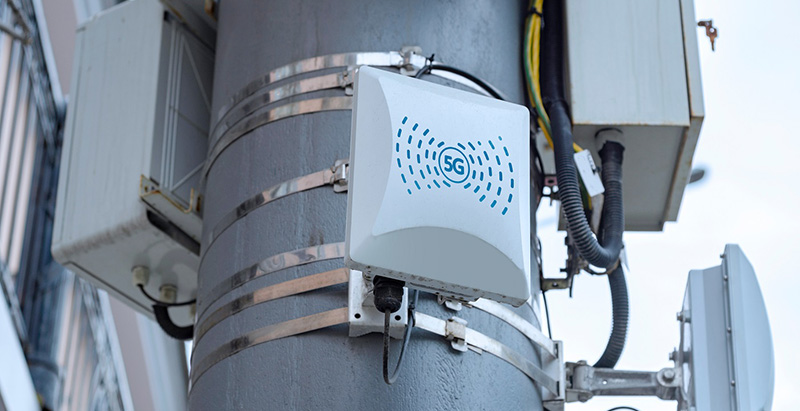
Mobile service providers face the challenge of providing sufficient capacity for high numbers of users in busy urban areas. Mobile users compete for access to the shared bandwidth of the radio signal that provides service coverage in an area. The greater the number of simultaneous users in a cell, the lower the online speeds available to each.
One solution is to provide extra, smaller cells in areas where large numbers of people congregate – shopping centres, sports arenas, and busy high streets, for example. Since the coverage area of these cells will not stretch further than a few hundred metres, their miniature mobile antennae can be installed relatively low down on street furniture such as lamp posts or even redundant phone kiosks.
The UK mobile operator EE has recently installed several thousand small cells in towns and cities around the UK. Busy tourist spots in rural areas can also benefit from small cell deployment. The EE small cells use either 4G or 5G technology with download speeds of 300 Mbit/s or 600Mbit/s respectively – high enough to satisfy even the most demanding of users.
These EE sites operate at radio frequencies (RF) of 1800 MHz, 2.5 GHz or 3.5 GHz. But operating at even higher frequencies could provide yet faster download speeds. Vodafone has recently carried trials of 5G cells operating at radio frequencies of tens of gigahertz (GHz) in the so-called mmWave band. These trials provided download speeds of 4 Gbit/s at a distance of 100 metres from the cells’ antennae and 2.4 Gbit/s 400 metres away.
The UK regulator Ofcom is planning an auction of mmWave frequencies for mobile operators. So, city users could have access to commercial mmWave services in the near future.
PTT offers online courses covering mobile technologies and services including an Introduction to mobile systems, 4G and 5G radio access networks, and Advanced mobile systems.